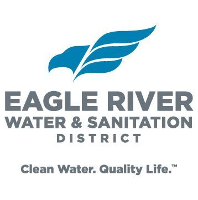Citizens Energy outlines plan to supply Lebanon from Indianapolis water sources – WRTV

Report on the Lebanon Water Supply Program and Sustainable Development Implications
Project Overview
A report on the planned Lebanon Water Supply Program, initiated by Citizens Energy Group, which intends to supply water to the LEAP district and the city of Lebanon.
- Commitment: Citizens Energy Group has committed to providing 25 million gallons of water per day to Lebanon Utilities by the year 2031.
- Source: The water will be sourced from the Indianapolis supply, primarily through an increased withdrawal from the Eagle Creek Reservoir.
- Volume Increase: The current withdrawal rate of approximately 10 million gallons per day from the reservoir is projected to increase to between 11 and 13 million gallons per day.
- Infrastructure: The program involves expansions to various water intakes and the construction of pipelines to transport the water.
Stakeholder Concerns and Community Engagement
The proposed project has generated significant concern among local residents, officials, and advisory committees regarding its environmental and social impacts.
- Lack of Transparency: The Eagle Creek Park Advisory Committee and residents have expressed concern over a lack of information and consultation, stating that key decisions appear to have been made without public input.
- Ecological Impact: A primary concern is the potential adverse effect of increased water withdrawal on the Eagle Creek Reservoir’s ecosystem, a vital natural resource.
- Resource Management: Questions have been raised about the long-term sustainability of the regional water supply, with water being described as a precious and finite commodity requiring strategic management.
- Community Dialogue: There is a strong call from residents and State Senator J.D. Ford for Citizens Energy Group to hold a public town hall to address community concerns directly.
Analysis in the Context of Sustainable Development Goals (SDGs)
The Lebanon Water Supply Program intersects with several key United Nations Sustainable Development Goals, highlighting tensions between economic development and environmental and social sustainability.
-
SDG 6: Clean Water and Sanitation
This goal aims to ensure the availability and sustainable management of water for all. The project supports economic activity by providing water but raises critical questions regarding key targets:
- Target 6.4: The plan’s impact on water-use efficiency and the sustainability of withdrawals from the Eagle Creek Reservoir is a central point of contention.
- Target 6.5: The lack of integrated planning involving all stakeholders challenges the principle of integrated water resources management.
-
SDG 15: Life on Land
This goal focuses on protecting, restoring, and promoting the sustainable use of terrestrial ecosystems. The concerns of the Eagle Creek Park Advisory Committee directly align with:
- Target 15.1: The project’s potential to disrupt the reservoir’s ecosystem runs contrary to the goal of conserving and sustainably using inland freshwater ecosystems.
-
SDG 11: Sustainable Cities and Communities
While the project is intended to support urban and industrial growth in Lebanon, its implementation raises issues related to sustainable community development.
- Target 11.3: The current approach challenges the goal of enhancing inclusive and sustainable urbanization through participatory planning.
-
SDG 16: Peace, Justice and Strong Institutions
The community’s call for transparency and dialogue underscores the importance of accountable and inclusive institutions.
- Target 16.7: The demand for a town hall meeting is a direct appeal for the responsive, inclusive, participatory, and representative decision-making that this target promotes.
Analysis of Sustainable Development Goals in the Article
1. Which SDGs are addressed or connected to the issues highlighted in the article?
- SDG 6: Clean Water and Sanitation: The core of the article revolves around the provision and management of water resources, specifically the plan to withdraw more water from Eagle Creek Reservoir to supply the city of Lebanon. This directly addresses the goal of ensuring the availability and sustainable management of water.
- SDG 9: Industry, Innovation and Infrastructure: The project involves significant infrastructure development, including a “pipe and plant expansion” to transport water from Indianapolis to Lebanon. This relates to the goal of building resilient infrastructure.
- SDG 15: Life on Land: The article highlights concerns from the Eagle Creek Park Advisory Committee and a retired hydrologist about the potential “major impacts on the ecosystem” due to changes in water withdrawal. This connects to the goal of protecting and restoring terrestrial and freshwater ecosystems.
- SDG 16: Peace, Justice and Strong Institutions: The lack of transparency and public consultation is a key issue. Residents and officials are calling for more information and a “town hall” to discuss the plan. This relates to the goal of ensuring responsive, inclusive, and participatory decision-making.
2. What specific targets under those SDGs can be identified based on the article’s content?
- Target 6.4: By 2030, substantially increase water-use efficiency across all sectors and ensure sustainable withdrawals and supply of freshwater to address water scarcity. The article discusses a plan to supply “25 million gallons a day” to Lebanon by increasing withdrawals from the reservoir, making the sustainability of these withdrawals a central issue.
- Target 6.5: By 2030, implement integrated water resources management at all levels, including through transboundary cooperation as appropriate. The project involves managing a shared water resource (Eagle Creek Reservoir) to supply different municipalities (Indianapolis and Lebanon), which is a practical application of integrated water resources management.
- Target 9.1: Develop quality, reliable, sustainable and resilient infrastructure… to support economic development and human well-being. The “Lebanon Water Supply Program” is an infrastructure project designed to support the development of the LEAP district and the city of Lebanon by providing a reliable water supply.
- Target 15.1: By 2020, ensure the conservation, restoration and sustainable use of terrestrial and inland freshwater ecosystems and their services. The concern that “dramatic changes to the withdraw or influx of water here will have an impact on the ecosystem” directly aligns with the need to ensure the sustainable use of the Eagle Creek Reservoir’s freshwater ecosystem.
- Target 16.7: Ensure responsive, inclusive, participatory and representative decision-making at all levels. The community’s demand for a town hall and State Senator J.D. Ford’s call for more transparency from Citizens Energy reflect a push for more inclusive and participatory decision-making regarding the water supply project.
3. Are there any indicators mentioned or implied in the article that can be used to measure progress towards the identified targets?
-
For Target 6.4: The article provides specific quantitative data that can serve as indicators.
- The volume of water to be supplied: “25 million gallons a day to Lebanon Utilities by 2031.”
- The current withdrawal rate: “about 10 million gallons a day.”
- The projected increase in withdrawal: “raise that to 11 to 13 million gallons per day.”
These figures can be used to track changes in water withdrawal and supply, which are key components of Indicator 6.4.2 (Level of water stress: freshwater withdrawal as a proportion of available freshwater resources).
- For Target 15.1: While no specific metric is given, the article implies the need for an indicator. The concern about the “impact on the ecosystem” suggests that monitoring the ecological health of the Eagle Creek Reservoir (e.g., water levels, biodiversity, water quality) would be a necessary indicator to measure the project’s sustainability.
-
For Target 16.7: The article implies indicators related to public participation.
- The holding of a “town hall” meeting.
- The degree of transparency from Citizens Energy Group, as requested by residents and officials.
These actions can be seen as qualitative indicators of progress towards more inclusive and responsive decision-making.
4. Summary Table of SDGs, Targets, and Indicators
| SDGs | Targets | Indicators |
|---|---|---|
| SDG 6: Clean Water and Sanitation | 6.4: Ensure sustainable withdrawals and supply of freshwater.
6.5: Implement integrated water resources management. |
– Volume of water supplied to Lebanon (25 million gallons/day). – Change in daily water withdrawal from Eagle Creek Reservoir (from 10M to 11-13M gallons/day). |
| SDG 9: Industry, Innovation and Infrastructure | 9.1: Develop quality, reliable, sustainable and resilient infrastructure. | – Implementation and completion of the “Lebanon Water Supply Program,” including the pipeline and plant expansion. |
| SDG 15: Life on Land | 15.1: Ensure the conservation and sustainable use of inland freshwater ecosystems. | – (Implied) Monitoring the ecological health and impact on the Eagle Creek Reservoir ecosystem. |
| SDG 16: Peace, Justice and Strong Institutions | 16.7: Ensure responsive, inclusive, participatory and representative decision-making. | – Number of public consultations or town halls held. – Level of transparency and information provided to the public by Citizens Energy Group. |
Source: wrtv.com
What is Your Reaction?
 Like
0
Like
0
 Dislike
0
Dislike
0
 Love
0
Love
0
 Funny
0
Funny
0
 Angry
0
Angry
0
 Sad
0
Sad
0
 Wow
0
Wow
0




















































.jpg.webp?itok=0ZsAnae9#)

























